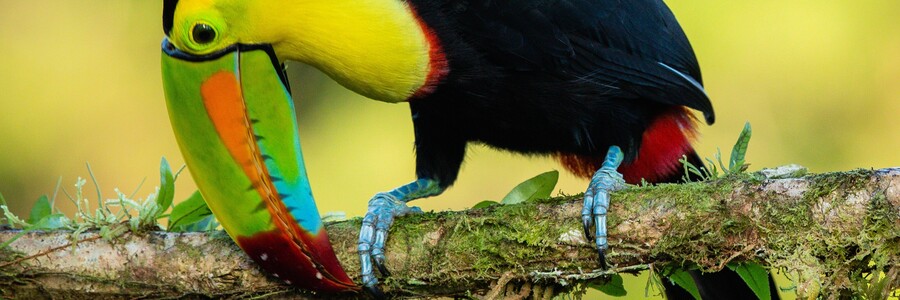The lowland forests of the Amistosa Corridor connect La Amistad National Park and the Osa Peninsula, where Corcovado National Park is located. While these two nationally designated conservation areas fall under the highest legal protection, the forests of the Amistosa Biological Corridor are politically neglected. However, this area is extremely valuable - with at least 12 major ecosystems, the Amistosa Lowlands is one of the best examples of tropical moist rainforests in Central America. It is considered a biodiversity "hotspot" with an exceptional level of endemism. For example, it hosts significant populations of large, endangered mammals such as the jaguar and puma, and has numerous other animal, plant and tree species that are often unique to the area.
Endangered habitat
Despite the importance of the Amistosa Biological Corridor, its forests are not yet protected. Poaching, illegal logging, and even slash-and-burn agriculture are destroying these ecosystems and threatening the homes of animals and plants. The lowlands of the Amistosa Corridor are located near major roads and villages, which has resulted in pristine forests being cut for agriculture and livestock at an alarming rate. This large-scale forest destruction triggered a serious decline in available habitat - especially putting species with specific habitat needs or highly restricted ranges at risk. The black-cheeked habia (Habia atrimaxillaris), for example, is restricted to a small area in the Amistosa Corridor and the Osa Peninsula, where forest loss means it may only be found in Corcovado National Park.
Five areas make a start
Protecting this sector is an ambitious plan that we plan to tackle with our local partner, Fundación Universidad de Golfito. Our initial strategy is to buy an area of about 1,000 hectares on the eastern side of the area. This is because the eastern flank is particularly vulnerable due to its geography and easy access. For starters, we have our eyes on five specific areas there that we can buy up with the help of your donations and elevate to biological reserve status. By purchasing these properties, we can prevent legal or illegal loggers from entering the rainforests, creating a protective barrier for the valuable Amistosa Biological Corridor.

